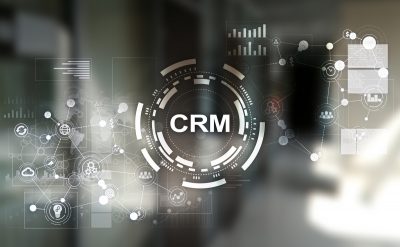CRM, we all know what CRM stands for. Customer relationship management, but do we know what customer relationship management actually means for a business? And why is it so essential to have a decent CRM in place?
CRM is a technology deployed by businesses to manage interactions with customers and potential customers to develop customer relations to simplify processes to increase sales, enhance customer service, and last but not least, increase profitability.
When a banter on CRM happens in a boardroom or at the work bay, it most usually refers to the CRM system as a tool that helps contact management, workflow processes, sales management, productivity, and more.
However, when we think a step ahead, CRM can be translated as a blend of business strategies, software, and processes that enable enterprises to focus on relationships with individual people ranging from customers, colleagues, vendors, or service users.
Remember, CRM is not just for sales. In fact, when CRM is embedded in functions from HR to customer services and supply-chain management, it is capable of displaying the biggest gains in productivity.
Now that we have a fair enough picture of how and where a CRM system can be fitted well within an enterprise system, it is time to talk about its implementation.
Amidst the havoc created by the pandemic, most successful businesses continue to share a bond and understand their customers by deploying the most suitable CRM solution as a part of the strategic function.
Even though CRM offers a range of benefits, its implementation can be quite challenging.
Things to remember
CRM is not a straightforward tool or a plug-and-play app that can easily onboard teams and get kick-started. Its deployment in the system demands a progressive approach.
However, enterprises need not fear the process. With the right mindset, CRM implementation can happen seamlessly for every person involved.
Steps that prove CRM implementation is no rocket science
1. Banking on the right tool
Every CRM is different. These solutions might fall under the same category but still have the originality of their own. Engineered with specific features and a unique toolset, it is essential for enterprises to check which ones resonate with their needs in a more suitable manner. For desirable results, businesses need to ensure the organization’s needs are aligned to the choice of CRM.
To do so, step number one can be an overview of the customer (you can do this better by additionally surveying your sales teams for added insight).
Considering the pandemic, a large chunk of the workforce is operating from home. However, it is inevitable to factor in details such as “who will require access” and “how they will do so.”
Furthermore, it is recommended to zero in on a solution with functionalities the business might need in the near future or a couple of years later. Considering services from a long-time lens works as a money saver too.
2. Know your customer
Before you finalize on one of your business’s best CRM tools, don’t forget to ask yourself who your customer is and what traits they follow? This will work as a stepping stone to know the customers’ end goal with your service or product, which eventually will transform your mission into reality.
Remember, every aspect of the customer journey needs to be considered to make the CRM system work for the business’s advantage.
In essence, the more a business understands its customers, the more responsive it can be toward them.
The reward of a sublime CRM system cannot be achieved by simply buying fancy or expensive software. CRM can be achieved by,
- Profiling individual and groups to apply effective marketing techniques to increase sales
- Finding out customer behavior and keeping a close look at purchasing patterns, opinions, and preferences
- Modifying the way a business operates to enhance customer service and marketing
3. Leverage Integrations
To optimize a smart CRM tool and reduce workload, all the business data must be centralized. It is highly advised not to leave the CRM tool in isolation. Instead, to lead in the game, leveraging its integration with other apps from the beginning works incredibly.
A profitable CRM is the one that serves as a central hub of integration with a range of software commissioned by the business.
This includes everything from communicating over Slack with a teammate during a deal or scheduling Zoom calls with a warm lead.
A good CRM provides a robust solution that enables activities without having to switch tools or tabs and saves information automatically within the platform.
CRM implementation in a snapshot
- Select the right CRM
- Chalk out a CRM implementation plan
- Equip your team for the CRM tool
- Ask for feedback from employees during implementation
- Measure aspects that matter and alter them as and when necessary
Conclusion
To get the best out of CRM technology, it is essential to have a customer-centric strategy in place. By concentrating on what customers want, businesses are most likely to witness better results from sales activities.
CRM tools focus on multiple business areas supporting teams to collaborate effectively while achieving new customers and retaining the old ones.
Our repository of the latest whitepapers on sales and marketing has ample and much-needed information on customer relationship management. Do visit if you a minute.












